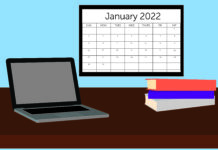A UW computer engineering student transforms note-taking for Science, Technology, Engineering and Mathematics (STEM) students with a free tool, earning a coveted spot in Y Combinator’s (YC) prestigious summer 2024 investment batch.
Stempad is an online scientific text editor created by Ralph Rouhana, a 4B computer engineering student. Stempad allows you to quickly make scientific notes, diagrams, and drawings all from your laptop. “It currently supports a lot of different types of blocks,” Rouhana said. “You have your math block, you have your graph block, chemistry circuits, and a lot of other different blocks.”
Stempad has caught the eyes of YC and was accepted into the Y Combinator batch of summer 2024. YC is an American technology startup accelerator that invests $500,000 USD into early-stage startups in exchange for a seven per cent stake, and includes a three-month program to coach the startups each batch.
Stempad was originally made to streamline Rouhana’s personal challenge with note taking. “I really struggle with handwritten notes and I wanted a tool that could allow me to take handwritten quality notes with my keyboard for my scientific courses,” Rouhana said.
If you prefer to use a laptop for your notes, Rouhana encourages students to check out Stempad. “The special thing about it is the ability to match the speed of pen and paper, but for scientific notes which I don’t think exists in any other medium currently,” Rouhana said. “Let’s say you want to have some math coexisting with some code coexisting with some circuit sketch… you wouldn’t be able to do that with any of the current tools, and especially not at the speeds that you can do it with Stempad.”
So far, Stempad has had positive feedback with its roughly 80 users and counting. “As a student in STEM with ADHD, it can be difficult keeping track of 100 tabs for each class,” said Samuel Lyon, a UW architectural engineering student. “Stempad is convenient because it places all the tools I need for notetaking or brainstorming onto one webpage.”
New features are on the way for Stempad, such as live collaboration. “I really want people to be able to work on the same document together because I feel like that takes note taking to the next level,” Rouhana said. “I’m also looking into expanding into different use cases and biology being I think the next focus
Rouhana originally came up with the idea for Stempad in January and it quickly developed into a product through the ECE 499 course. “It’s called ECE 499 and it allows you to work on your own personal project and find a supervisor for it… I ended up turning it into something that could get real users and could also count as a credit for me during my last term of winter.”
Rouhana encourages students to take the leap and develop their own project if they’re interested. “I’d suggest to not overthink it and just get started… What helps me stay motivated is to focus on the original vision I had in creating the product. For Stempad, that vision hasn’t changed; making scientific writing easier for students across all STEM disciplines.”
If you want to check out Stempad, you can do so at www.stempad.io.





























